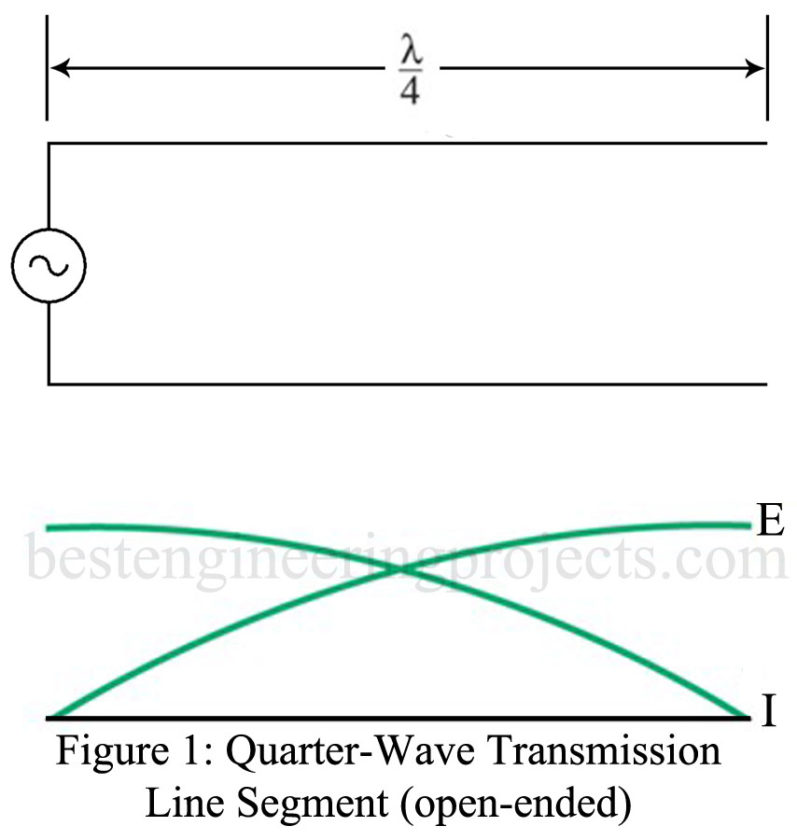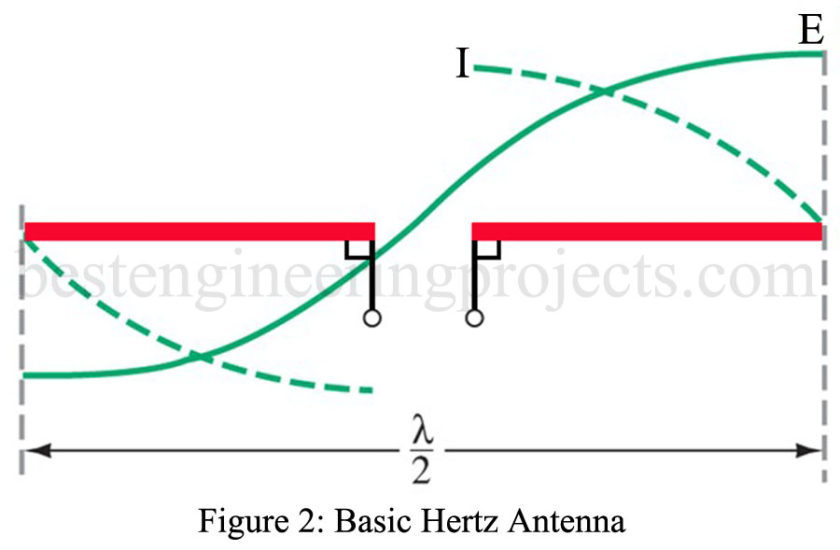Any antenna having a physical length that is the one-half wavelength of the applied frequency is called a Hertz antenna. Hertz antennas are predominately used with frequencies above 2 MHz. It is unlikely that a Hertz antenna will be found in applications below 2 MHz because at these low frequencies this antenna is physically too large. Usually, at frequencies below 2 MHz, a Marconi type of antenna is used. This is a quarter-wavelength antenna with the ground reflection acting as the other quarter wavelength.
Development of the Hertz Antenna
When the open two-wire transmission line, it was found that one of its disadvantages was excessive radiation at high frequencies. Radiation from a transmission line is undesirable since the perfect transmission line would be one that possessed no losses. Although the two-wire transmission line was considered to be an adequate transmission medium at extremely high frequencies, it can become an effective antenna. For this reason, an analysis of the open-ended, quarter-wave transmission line will furnish an excellent introduction for understanding basic antenna theory. The open-ended quarter-wave transmission line segment is shown in Figure 1.
The characteristics of the open-ended line are such that the voltage at the end of the line is maximum, and the current at the end is zero. This is true of an open-ended regardless of the wavelength of the line. On either the open or shorted line, standing waves will be produced. Since the voltage applied to the line is sinusoidal, the line will constantly be charging and discharging. Current will be flowing in the line continuously. Since the current at the ends of the line is minimum, a quarter-wave back (at the source) the current must be maximum. The impedance at the sending end is low, and the impedance at the open circuit is high. The standing waves of current and voltage are shown in the quarter-wave section in Figure 1.
It is desirable to have maximum radiation from an antenna. Under such conditions, all energy applied to the antenna would be converted to electromagnetic waves and radiated. This maximum radiation is not possible with the two-wire transmission line because the magnetic field surrounding each conductor of the line is in a direction that opposes the lines of force about the other conductor. Under these conditions, the quarter-wave transmission line proves to be an unsatisfactory antenna; however, with only a slight physical modification, this section of the transmission line can be transformed into a relatively efficient antenna. This transformation is accomplished by bending each line outward to form a half-wave or Hertz antenna or a
dipole, as shown in Figure 2.
The antenna shown in Figure 2 is composed of two quarter-wave sections. The electrical distance from the end of one to the end of the other is a half wavelength. If voltage is applied to the line, the current will be maximum at the input and minimum at the ends. The voltage will be maximum between the ends and minimum between the input terminals.

